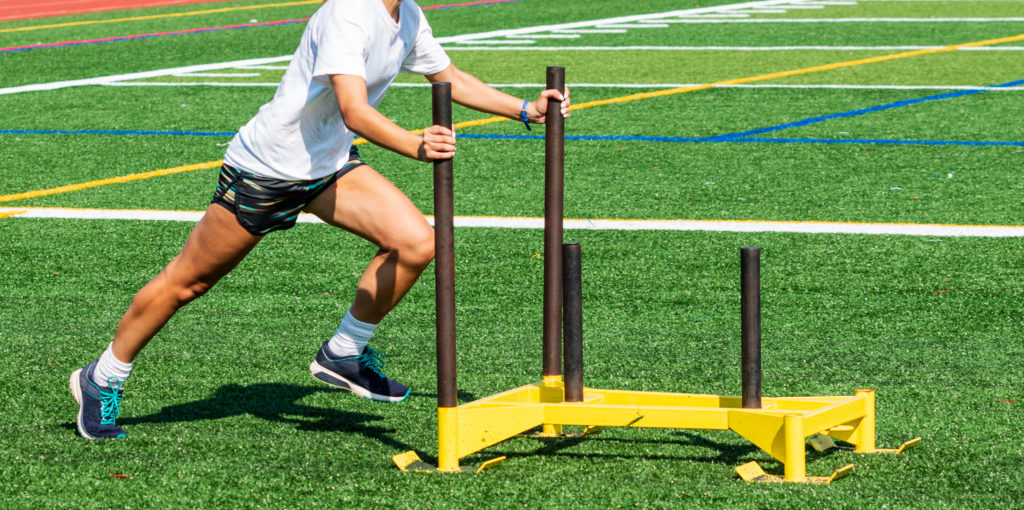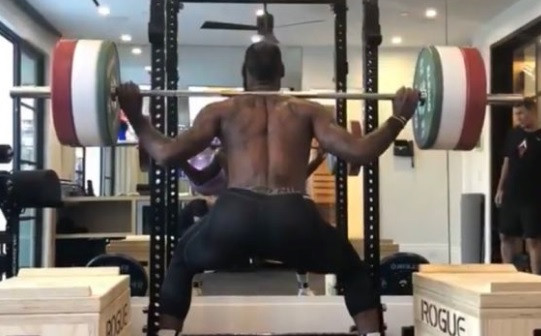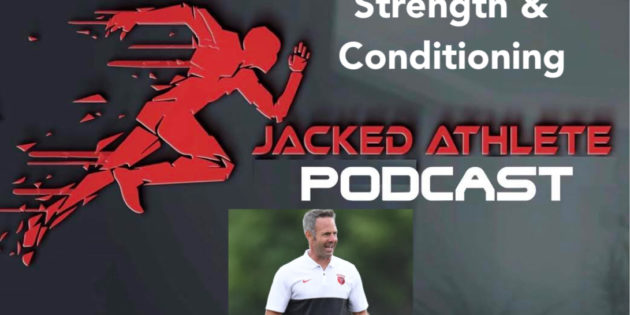What is the point of Strength & Conditioning?
“The language is wrong… Strength in what? Conditioning in what?”
The starting point is wrong. Strength coaches start by thinking about “weights, med balls, resistance bands, resisted sprinting, and sled pushes.”

“Let’s start with the sport first… how can the strength and conditioning world help us in doing X which is, scoring one more goal than the opponent.”
How to Fix the Lack of Education of Sport
Academics: “Sport has to be discussed… how does sport work? The geometry that’s involved. The movements that are involved. The actions that are involved. All that can be analyzed and scaled down. Now, what can we do in the weight room to assist on that?
Creating the Objective Starting Point
“This is the problem with sport coaching… there isn’t this way of thinking that we can start with a clear reference and work our way back.”
“At some stage, you have a blend of objectivity and subjectivity, you can’t remove either or. However, the starting point needs to be something that is clearly defined.”
“Just because I did something at my former school is now gonna work in this context I’m in, then that same person believes in Santa Claus… just because something happened in the past does not mean in no way, shape, or form, does it dictate what happens in the future.”

What is the starting point for the strength coach?
Play and train with your strongest team
- “You want your best players on the field every day for training for every minute of training and you want them to be available for every game, for every minute of the game that they can possible be out there for.”

- “Making the player faster could injure them faster. So now, they aren’t going to be available for every training session for every minute and they’re not going to be available for every game, every minute.”
- “How much load are you putting on them to do X? How much time do they have to spend in there to do X?”
- “Even if you make them faster… if, on the field, they run in the wrong direction, it doesn’t matter.”
Communication, Decision Making, Execution of Actions
“Every sport has communication. Every sport has decision. Every sport has the execution. If we started at that… I think the conversations could get more dialed in to what is most important for the athlete.”
GPP, SPP, Bondarchuk, Verkoshansky… this is not the language of starting with the sport.
“At the end of the day, some people just don’t want to be out of the Matrix… some people just want to eat steak and they know they’re not really eating steak but they don’t really care.”

What Winning Means
“If you won, you must know what you’re doing. And that is incorrect.”
“There’s probably not one championship that we could think about that the team, at some stage, didn’t have luck on their side.”
Injury Prevention
“If injury prevention is actually working then how come over the last 20 years, injuries are going up and not down?”
“Injury Prevention is laughable… we’re not preventing anything.”
“Load is still the number one factor of what we don’t consider when we’re talking about how we’re going to keep the players on the field.”

Injuries: “The strength coach world is in a no-win situation.”
Making Players Slow in Long Practices
“The differences between the levels (high school to college to pros)… is speed of actions.”
“You want to be at 100% in the game… but in training, the idea is, in theory, to push them to play at 101% to increase speed.”
“If players know that they are going to play or train longer than what they would in a game, they aren’t stupid, they know that they’re gonna pace themselves. Because they don’t have the energy, they don’t have the capacity or energy stores to last 2-3 hour practices, it’s impossible. And what do we gain from that? You have to then play at a slower tempo. So you’re not playing at 100% in training. You are playing more at 90, or 80, or 75% in training. And if you continue to do that, the only thing that happens is you just keep playing at slower and slower tempos.”

“We’ve got to be training at 100% to be able to even get to 101% to stretch the boundaries of the players.”
“Why are we training 180-240 minutes and doing that session after session after session after session. If coaches realize that that’s what’s going on, they would understand that you have to be playing at a slower tempo. You cannot play at a high tempo for 2 and a half hours, it’s impossible.”
Killing them day after day: “All you’re asking for is injuries, all you’re asking for is slower tempo, slower actions, fatigued brains, fatigued bodies, and performance will drop.”
Mental Toughness
“Mentally tough doesn’t exist… what we’re asking anybody to do is how well can they continue to focus on the task at hand with clarity and precision.”
“Think next task with no outside influence… that’s what we’re training.”
Dynamic Warm-Ups
“The dynamic warm-up looks really good at the beginning of the year. But by the end of the year, if you’re still doing it, it doesn’t look anything like it did at the beginning of the year.”
The weight room: “When we approach it with, we think everybody wants to be in there, it’s actually going to cause more destruction in our relationships than it will cause an actual cohesive relationship with the athletes.”
Brian’s Links:
Links to Resources:
Governing Dynamics by James Smith



